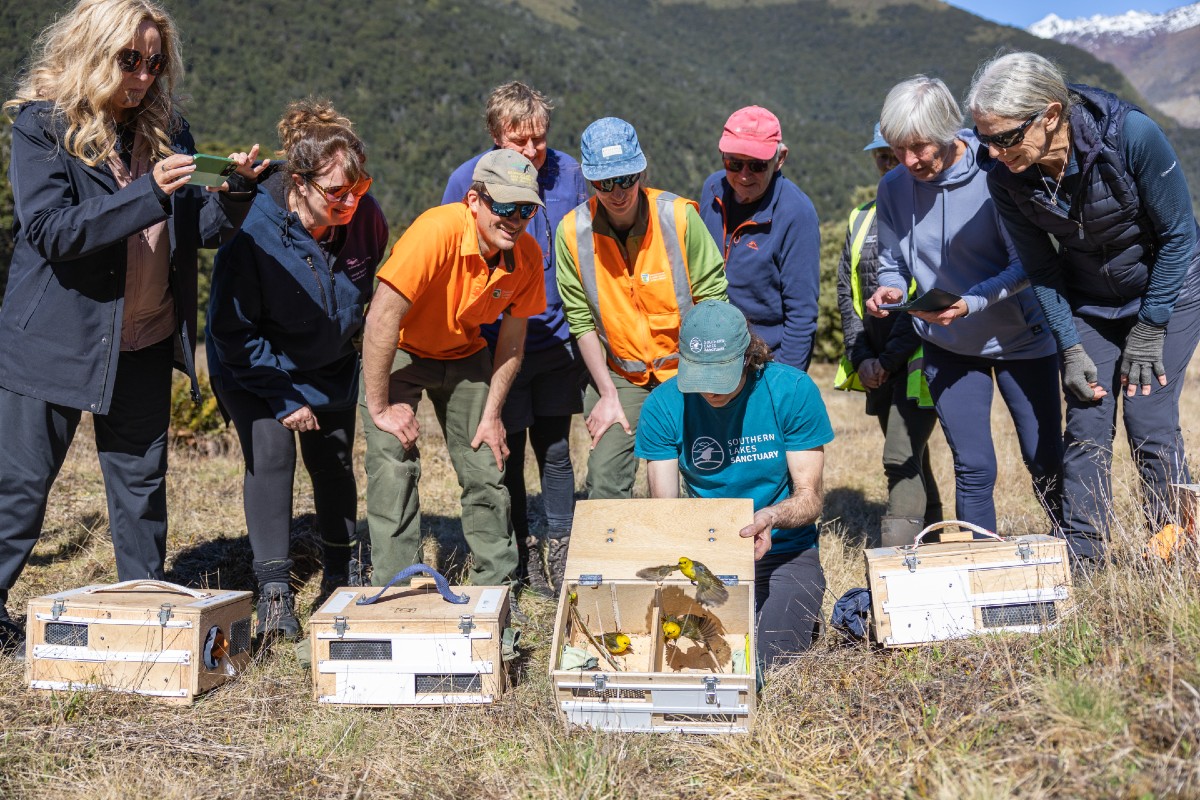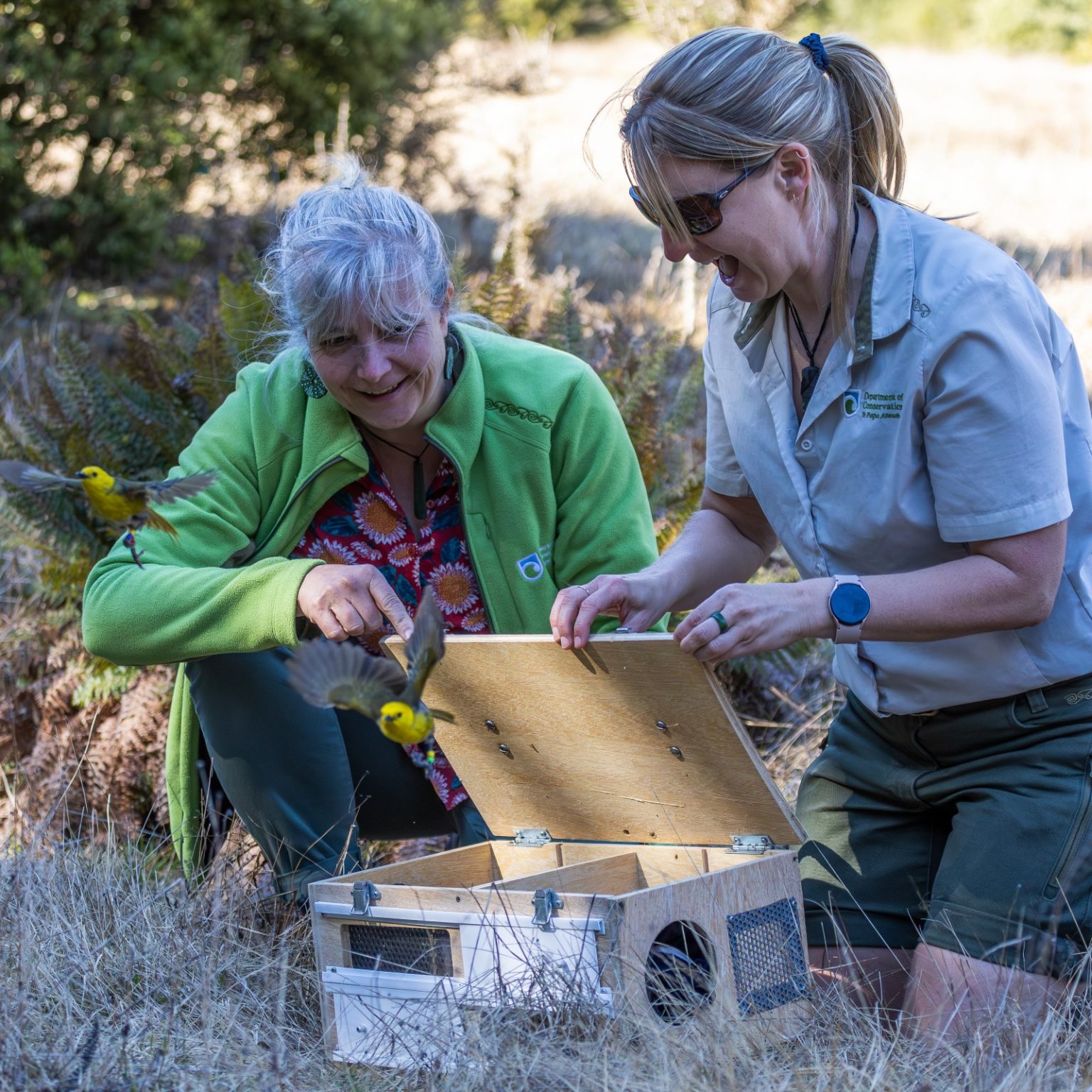Mohua return to West Matukituki

19 October 2025, 4:04 PM
 The mohua release - the result of a major conservation collaboration. PHOTO: Geoff Marks
The mohua release - the result of a major conservation collaboration. PHOTO: Geoff Marks A new chapter has begun for the West Matukituki Valley with the return of mohua (yellowhead) to the forests of Mt Aspiring National Park.
Once common throughout Aotearoa’s South Island, the bright, lively songbirds are now one of our rarest native forest birds – but thanks to years of collective effort, they’ve found a new home in the Southern Lakes.
Last week (Tuesday October 14) a team of experts carefully captured 50 mohua on Pukenui (Anchor Island) in Fiordland and translocated them to a release site up-valley from Aspiring Hut.
With the breeding season approaching, the timing gives the birds a chance to settle into their new home and establish territories.
The return of the mohua is the result of a major conservation collaboration between the Matukituki Charitable Trust, Ngāi Tahu, the Department of Conservation’s (DOC) Mohua Recovery Group, the Mohua Charitable Trust, and Southern Lakes Sanctuary.
“When the trust began predator control here more than a decade ago, our hope was always that one day we could bring back species like mohua,” Matukituki Charitable Trust founding trustees Derek and Gillian Crombie said.
“To now see that happening is hugely rewarding for everyone who has supported the project and a positive step for biodiversity in the valley.”
For more than a decade, the Matukituki Charitable Trust has been working tirelessly to control predators across the West Matukituki Valley – an area that attracts more than 100,000 visitors a year and is renowned for its spectacular alpine landscapes, including the Rob Roy Glacier.

Jack van Hal and Katherine Longstaff during the mohua release. PHOTO: Geoff Marks
This long-term predator management, supported by DOC and Southern Lakes Sanctuary, has created the conditions needed for native wildlife to thrive again.
Predator control in the Matukituki has already brought benefits to a range of native species including toutouwai (South Island robin), kākāriki, tītitipounamu (rifleman), South Island kākā, kea, pīwauwau (rock wren), and braided river birds such as tarapirohe (black-fronted tern), and pohowera (banded dotterel). Bats, lizards and native mistletoe are also benefitting from this mahi (work).
“Bringing mohua back to the Matukituki is a really special moment,” Southern Lakes Sanctuary chief executive Paul Kavanagh said.
“It shows what’s possible when conservation organisations, mana whenua, funding partners and government agencies work together. The years of predator control and planning are paying off, and seeing these birds back in the valley is a milestone for everyone involved.”
Once common throughout New Zealand, the mohua is a striking forest songbird now mostly confined to small, scattered populations in the South Island and on Rakiura Stewart Island, with fewer than 5,000 birds remaining.
NEWS






